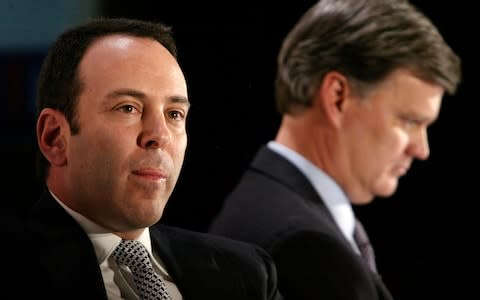Sears: from world’s largest retailer to bust
Sears, the iconic US department store chain, has filed for bankruptcy as it struggles with $5.6bn (£4.3bn) of debt and the relentless march of online shopping.
The 125-year-old business, which held the crown of the world’s largest retailer in the Sixties, plans to close 142 of its 700 stores after filing for Chapter 11 bankruptcy protection on Monday.
The move will reorganise the debts of parent company Sears, Roebuck and Co and Kmart Corp in attempt to jump start the business, which has failed to turn a profit for seven years.
It comes after the strain on the company’s cash flow meant it was not be able to meet a $134m debt payment.
Eddie Lampert, who bought Sears for $11bn in 2005, is to remain chairman despite stepping down as chief executive following a string of ill-fated attempts to reboot the business.
The retailer, which also owns the Kmart brand, was founded by Richard Sears in 1886 when he started selling watches to supplement his income as a railroad station agent.
He transformed the company into the Amazon of its day, selling everything from tools to opium as a mail order catalogue business. It would later branch out into bricks-and-mortar stores, opening its first sites in 1925.
In 1906, it became the first major US retailer to embark on a stock market flotation and went on to notch up $1bn sales in 1945. However, it endured dismal fortunes under Lampert, despite numerous attempts to revive the retailer in the face of Amazon’s irresistible rise.

It included raising $2.5bn by spinning off 254 stores into retail investment trust in 2015. It offloaded its Craftsman tools brand to Stanley Black & Decker two years later.
However, the company’s financial problems remained. At the beginning of October, it reported a quarterly net loss of $508m.
For Neil Saunders, the managing director of GlobalData Retail, the collapse of Sears is “terrible and scandalous”, but “not surprising”.
While Chapter 11 means it can attempt to iron out its financial problems, Saunders believes “too much rot has set in at Sears to make it a viable business”.
“Over the longer term it is still unclear what Sears hopes to accomplish. We believe there is no clear path to success,” he says.
“The group has tried to shrink its way to profitability for years to no avail, so it is hard to see why pursuing the same strategy under the auspice of Chapter 11 would result in a different outcome.”
Sears may glean some hope from the strength of the US economy. The country’s unemployment rate has hit its lowest level since October 1969. The US economy, meanwhile, grew at its fastest pace for four years at 4.2pc during the second quarter.
US retail sales may have only eked out 0.1pc growth in September, but the strength of the jobs market has ensured that consumer spending continues to grow.
This backdrop should provide fertile ground for a struggling retailer to recover. However, shoppers with cash in their pockets are only worthwhile if you can attract them away from the competition.
Rival retailer Walmart - America’s biggest grocery retailer by sales - has made repeated investment in its store network and online offer to fight against the march of Amazon.
It recently announced plans to launch a delivery service called Spark, a platform where a fleet of drivers use their own cars to make fast deliveries.
Sears must also invest and innovate in order to survive, but with a debt pile in excess of $5bn it does not have the financial firepower to make big bets.
Chapter 11 will go some to alleviating the pressure, giving the retailer a chance to jettison fringe businesses and restructure its debts.
It must also shift away from a strategy of managing decline if its to stand a chance of survival, according to Saunders.
“Ultimately, Sears needs not just to fix its financial problems,” he adds. “It also needs to repair the deficiencies in terms of retail strategy. In our opinion, only a complete change of management will bring this about.”
US President Donald Trump did not mince his words about the Sears management team, claiming the business had been “improperly run for many years”.
But while Trump described the bankruptcy as “very, very sad”, competitors such as Walmart, Target and JC Penney will be licking their lips.
The trio gobbled up a slice of Toys R US’ $7bn sales when the chain succumbed to the parlous state of its finances earlier this year.
A total collapse of Sears could prove a more lucrative prize. Over the past year, it has pulled in $8.7bn in sales across a diverse range of products, from TVs to clothes.
Sears may have once been the big beast of retail, but Chapter 11 is likely to be the last throw of the dice before it finally succumbs to Amazon and Walmart.
